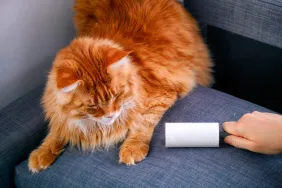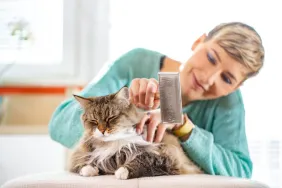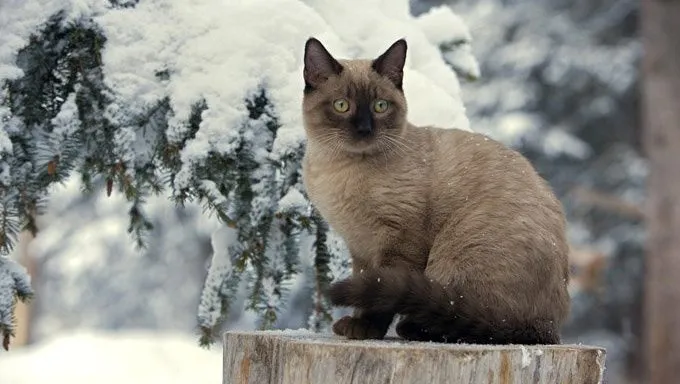
Winter is a great time of year. You can watch the snow fall and drink cups of warm apple cider while you and your cat are curled up on a blanket in front of the fireplace.
But winter isn’t just a cozy, sleepy season. It’s also a time when your cat may be facing some very unique winter grooming needs.
I know this from personal experience. One of my cats has longer fur, and he gets extra sensitive in the winter. I recently spent an hour trying to “wrap him up like a burrito” so I could trim some mats from his fur. Oh boy, did he yowl and hiss!
The winter months may be a time to stay cozy and warm, but when it comes to grooming your cat, they may not always be calm and quiet. Here are some tips to help make things a little better for you and your kitty.
1. Brush Your Cat’s Thicker Coat More Often
Cats tend to shed more in the spring and in the fall. In the spring they’re getting rid of their winter coat, and in the fall, as the weather starts to cool, they’re shedding to make room for a new winter coat.
This means that during the winter, your cat’s fur will likely be thicker to guard against the chill. For some cats, this means they may not do quite as good a job of cleaning themselves because there’s just so much more to get to.
You’ll want to brush your cat more frequently while they’re shedding and sporting a thicker winter coat. This will help prevent their fur from getting tangled up and turning into mats.
Start out slowly with a pet brush or wide-toothed comb. Groom small areas of their body one at a time, helping them get used to the sensation.
2. Be Careful With Matted Fur
If it’s too late and your cat has matted fur, you’ll need to clip it, but be careful! Your cat is sensitive, so they may make sudden movements when their fur is tugged.
Mats can also be really painful. Make sure you only use pet clippers designed for sensitive areas, and never use scissors.
A cat’s skin can be really thin, and you don’t want to risk cutting their skin while trying to get out a mat.
3. Help Them Grow A Healthier Winter Coat
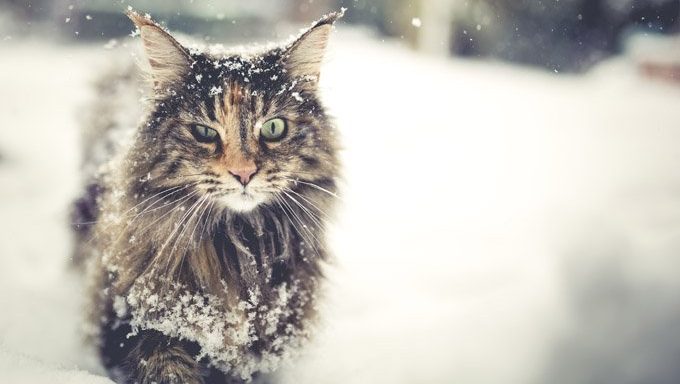
You can help your cat grow a thicker, healthier winter coat by making sure they have a balanced, healthy diet.
Feed them cat food that is formulated specifically for healthier coats. Essential fatty acids, like a cat-formulated Omega 3 supplement, can help the coat grow in shinier and thicker.
Of course, before changing or adding anything to your cat’s diet, talk to your veterinarian.
4. Avoid Static Shock
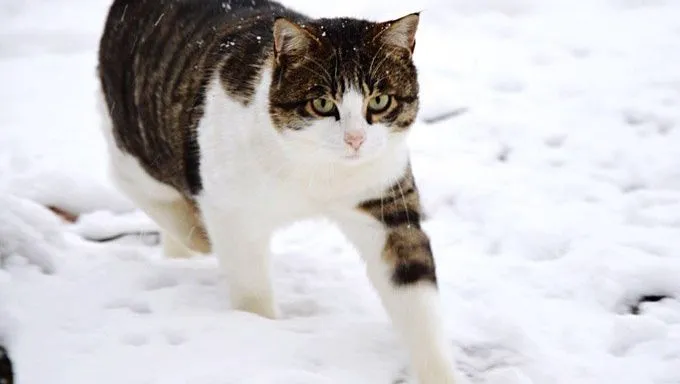
In the winter, your cat may be more prone to getting shocked by static electricity. Indoor heating can remove moisture from the air, leaving a colder and dryer climate that’s more static prone. Sometimes, just petting your cat can be enough to cause a little shock!
You can cut down on static in the air by adding a humidifier to the room. Before grooming, wipe down your kitty with a pet bathing wipe. When you bathe them, consider using a moisturizing shampoo.
According to PetMeds, you should never use a fabric softener sheet on your cat. The sheets can contain chemicals that are toxic to cats!
5. Watch For Painful Joints
In the winter months when temperatures are colder, an older or an arthritic cat’s joints might flare up. That means they’ll be in pain sometimes, and they’ll be a lot more sensitive to touch. It also means they might not be as willing and able to groom themselves.
If you need to brush or groom a cat like this, be extra gentle with them. If you have to “wrap them like a burrito” in a towel in order to trim matted fur or clip their nails, try warming the towel a little in the dyer first.
Remember, not all cats will take to grooming, especially in the winter if they’re feeling more sensitive or have particularly severe mats. If your cat seems to be neglecting their fur, get them checked out by a vet. Some vets will shave problem areas or cut out bad mats, themselves.
Don’t feel bad if you need to take your cat to a professional groomer. It just means that you’re looking out for your cat’s health and helping them be as comfortable as possible.
How do you groom your cat in winter? Do you have any special tricks or techniques? Let us know in the comments below!






